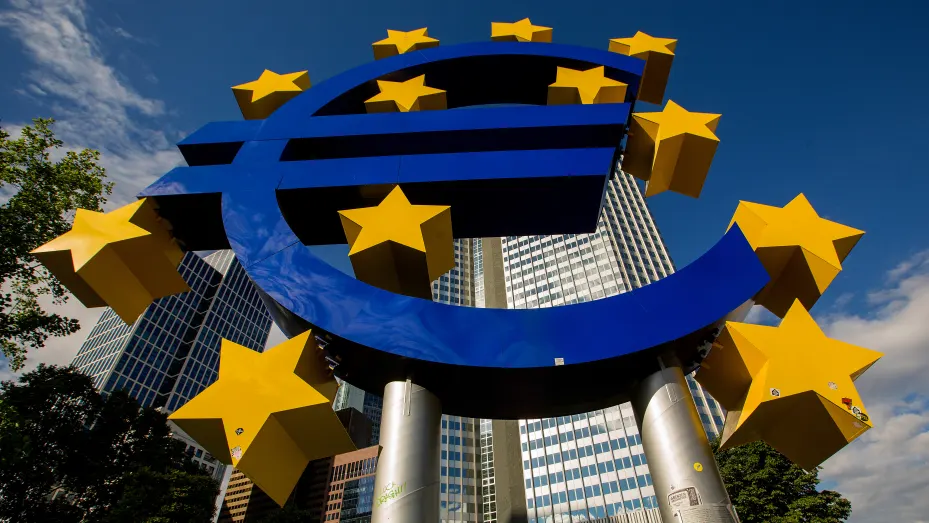
The euro is close to parity with the U.S. dollar for the first time in 20 years, but currency strategists are divided on how it will affect the economy and investors.
The euro was around $1.05 as of Thursday morning in Europe, down from around $1.22 a year ago. The common currency fell to just above $1.03 earlier this week.
Concerns about Russia's war in Ukraine, surging inflation, supply chain problems, slowing growth and tightening monetary policy have driven investors toward traditional safe haven assets such as the dollar.
The narrowing of the currency gap is due to the divergence in monetary policy among central banks. The US Federal Reserve raised benchmark borrowing rates by half a percentage point this month, its second hike of 2022, as it looks to rein in inflation running at a 40-year high.
Powell said on Tuesday that the central bank will not hesitate to raise rates until inflation comes down to a manageable level and repeated his commitment to bring it closer to the Fed's 2% target.
Despite high inflation across the euro zone, the European Central Bank has not raised interest rates. It has signaled the end of its asset purchase program and policymakers have become more cautious.
Francois Villeroy de Galhau, a policymaker with the European Central Bank, said on Monday that excessive euro weakness threatens price stability in the bloc, increasing the cost of dollar-denominated imported goods and commodities and further fueling the price pressures that have driven euro zone inflation to record highs.
Sam Zief, global head of currency strategy at JP Morgan Private Bank, told CNBC on Wednesday that the path to parity would require a downgrade in growth expectations for the euro area relative to the U.S.
Is that possible? It does seem like euro at parity is your worst case scenario, but it is not our base case.
The euro looks cheap because of the risk-reward over a two to three-year period.
Zief doesn't think that many clients will look back in two to three years and think that buying euro sub-$1.05 was a bad idea.
He noted that the Fed's aggressive interest rate hiking cycle and quantitative tightening over the next two years are already priced into the dollar.
Gallo told CNBC in an email that the material policy divergence between the Fed and the ECB will affect the EURUSD pair.
The currency is being dragged lower by the possibility of additional negative energy supply shocks and the evolution of the core balance of payments flows.
We don't see evidence of a large build-up in short positions in the data we track, which leads us to believe that the euro is weak because of underlying core flows.
Gallo suggested that a full German embargo on Russian fossil fuel imports would lead to energy rationing if the euro and dollar were to be parity.
Gallo said that it would not be surprising to see policy inertia continue if the central bank is faced with the worst possible combination of higher recession risk in Germany and additional sharp rises in prices.
I believe the Fed would become alarmed by a move to the 0.98-1.02 range in EURUSD, and I could see a move to this area.
The dollar index is up 8% since the start of the year, and in a note Tuesday,Deutsche Bank said the "safe haven" risk premium was now at the "upper end of extremes."
George Saravelos believes a turning point is close. He argued that we are now at a stage where the financial situation is getting worse, and that the Fed will have to raise interest rates more often in order to keep up with inflation.
Saravelos said they don't believe Europe is about to enter a recession and European data continues to beat the U.S.
The U.S. dollar is now the most expensive currency in the world, according to the valuation monitor fromDeutsche Bank.
The dollar is too high and we think it will go back up to 1.10 in the coming months.
Many analysts remain skeptical that parity will be reached, at least persistently, but pockets of the market still believe that the euro will eventually weaken further.
After the Fed's June 2021 meeting, policymakers signaled an increasingly aggressive pace of policy tightening.
The recent shift in the stance of the European Central Bank has not been enough to offset the increase in euro-zone inflation expectations, according to a note last week by a senior markets economist at Capital Economics.
Capital Economics expects the Fed's policy path to be similar to that priced in by markets, but Goltermann expects a less aggressive path for the ECB, implying an additional shift in nominal interest rate differentials against the euro.
With the euro more exposed to financial tightening due to the vulnerability of its periphery bond markets, this view is reinforced.
We expect the euro to weaken a bit further against the dollar, and we think it will reach parity by the end of the year.